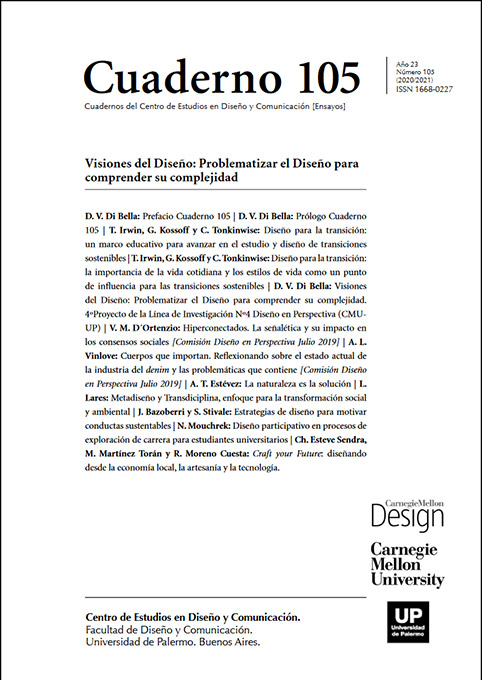Metadiseño y Transdiciplina, enfoque para la transformación social y ambiental
Abstract
In the current, complex and changing global scenario, the sense of urgency in achieving carbon neutrality, reducing the effects of greenhouse gases and the effects of climate change, are part of the challenges we face, not only because it affects the dependence of human beings of fossil fuels but also because of the way we live, how we organize ourselves as a society and their respective economies. Naomi Klein (2014), expresses it clearly when he says: this changes everything. For science, technology and design, innovation and sustainability are fundamental in the development of a new model, approaches and integral proposals, which provide solutions at different levels and dimensions to implement the structural transformations that the planet and society as a whole you need.
References
Dinur, B. (2007). What can metadesigners learn from ecology? Metadesign Colloquium: The idea of metadesign. Goldsmiths: University of London.
Escobar, A. (2016). Autonomía y diseño, la realización de lo comunal. Popayán: Editorial Universidad del Cauca.
Etymology. (2007). Dictionary of etymology. Recuperado el 08/09/2019 de http://www.etymonline.com.
Fuad-Luke, A. (2009). Design Activism: Beautiful strangeness for a sustainable world. London: Routledge.
Giaccardi, E. (2003). Principles of metadesign: processes and levels of co-creation in the new design space. (A Thesis submitted to the University of Plymouth for the degree of Doctor of Philosophy). United Kingdom: University of Plymouth.
Giaccardi, E. (2005a, 10/11/2006). Metadesign as an emergent design culture. MIT Press Journal. Leonardo 38, Nº4. Disponible en: https://www.mitpressjournals.org/doi/abs/10.1162/0024094054762098?journalCo=&mobileUi=0
Giaccardi, E. (2005b). Sowing the seeds for co-creation: in the multidimensional ppace of metadesign. Attainable Utopias. Disponible en: http://www.attainable-utopias.org/tiki/Co-Creating-a-MultiDimensional-Metadesign.
Jones, J C. (1980). Design methods: seeds of human futures. New York: John Willey & Sons Ltda.
Luengo, E. (2012). Una propuesta conceptual. La disciplina y sus desafíos en la universidad. Interdisciplina y transdisciplina: aportes desde la investigación y la intervención social universitaria (Pp. 09-24). Guadalajara: ITESO Universidad Jesuita de Guadalajara.
Manzini, E. (2007). Designing networks and metadesign. Metadesign Colloquium: The idea of metadesign, Goldsmiths, University of London.
Maturana, H. & Varela, F. (1987). The tree of knowledge: The Biological Roots of Human Understanding. Boston & London: Shambhala Publications.
Maturana, H. (1997). Metadesign. Chile: Instituto de Terapia Cognitiva (INTECO). Recuperado el 10/12/2006.
Papanek, V. (1985). Design for the real world: human ecology and social change. London: Thames & Hudson.
Wood, J. (2005). The tetrahedron can encourage designers to formalise more responsible strategies. Journal of Art, Design & Communication. Vol 3. Issue 3. United Kingdom: Linda Drew
Wood, J. (2007d). A Method for Co-Designers: Mapping Ethical Relations in Metadesign. London: Paper given on the MA Design Futures Programme at Goldsmiths, University of London: 10.
Wood, J. (2007). Design for Micro-Utopias: Making the Unthinkable Possible. England: Gower Pub Co.
Los autores/as que publiquen en esta revista ceden los derechos de autor y de publicación a "Cuadernos del Centro de Estudios de Diseño y Comunicación", Aceptando el registro de su trabajo bajo una licencia de atribución de Creative Commons, que permite a terceros utilizar lo publicado siempre que de el crédito pertinente a los autores y a esta revista.


